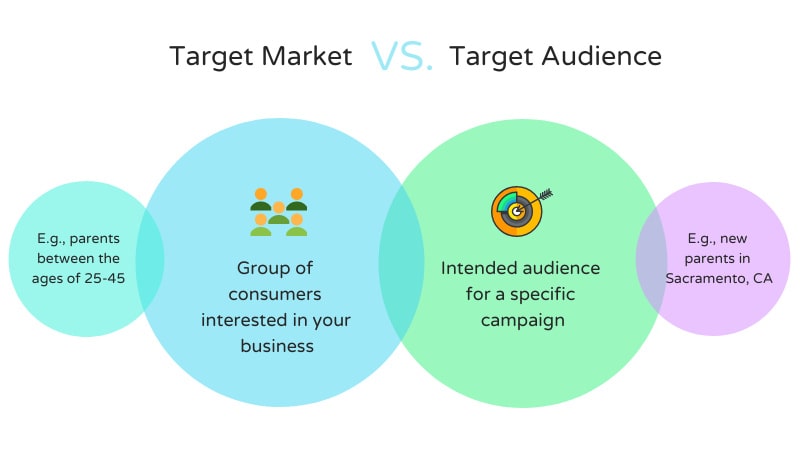What is your target audience? And what are the different types of audiences? This article will explain the differences between your target market and your target audience. Finally, we’ll talk about how you can find your target audience. Read on for helpful tips and tricks to discover your audience. If you’re a business owner, here are some ways to find your audience. You can use the internet to find a list of target audiences in your area.
What is target audience
The word “target audience” refers to a group associated with a marketing message. The audience may be comprised of company employees, society at large, media officials, or a range of other groups. Using the principles of Integrated Marketing Communication, Tom Duncan, founder of the University of Colorado’s Integrated Marketing Communications graduate program, defines a target audience as a group that will positively respond to a brand message and/or advertising message.
The idea of targeting a specific group isn’t difficult to grasp when you know your audience. In fact, knowing your audience’s problems will enable you to offer them a solution to those problems. While building a brand, you must first find its first prospective customers. Then you need to work on improving the conversion rates of your visitors. Research your competitors to discover which marketing methods work and which don’t. A good idea is to study other brands’ strategies and incorporate them into your own marketing efforts.

Using the right tools is crucial to making effective marketing decisions ahref is the best tool for find your target audience by study your competitors. A Target Audience Template will help you define your potential customer and answer some of the most common marketing questions. Define your audience using demographic information, which involves statistical information about your audience. A Target Audience Template will help you understand your customers, product categories, and business strategy. So, what is a Target Audience? and how do you reach it? Consider these tips to find your ideal audience!
Target Market vs Target Audience
When developing your marketing campaign, knowing your target market is crucial. Target market definition should be the focus of all your efforts. You need to include them in all of your campaigns, from the product and price tags to the style of language you use. It’s important to understand what your target market is and what it’s looking for from your marketing efforts. Your target market is the group of people who will purchase your product or service. You should always reference your target market whenever you can, even if your audience is much larger or smaller.

In general, target markets are defined by a combination of key demographics, including age, gender, and location. Some target markets can be further narrowed down by psychographics, which includes likes and dislikes, key values, and pain points. Another way to look at your target market is as a population. For example, a marketing campaign targeting men aged between 19 and 40 could be classified as a target market. Conversely, a brand may have more than one target audience, depending on the industry.
In marketing, a target market is a group of consumers based on specific demographics and behaviors. This definition will help you tailor your marketing strategy. By understanding your target market and what makes them tick, you can better understand them and reach the right people with your products and services. In addition, knowing your target audience will help you get more conversions and engage your audience. In addition, you’ll spend more money on advertising if you know what your audience wants.
Target Audiences Types
Knowing your target audience is crucial for a variety of reasons. In addition to increasing your ROI, it can help you connect with your audience and build relationships. By knowing what they’re looking for, you can match your products or services with their preferences, interests, and needs. Knowing your audience also helps you design better marketing campaigns and products that resonate with your consumers. It’s essential to identify the channels through which they consume information, and learn about the challenges and goals they share with other consumers.

To start, determine which type of audience you’re targeting. Target audiences are often smaller groups of consumers with specific characteristics in common. Some examples include age, income level, location, gender, and interests. You can further refine your target audience by examining the characteristics of each group. The more specific your target audience is, the better. For example, if you want to sell healthy snacks to San Francisco moms, your target audience may be women between 25 and 34. You can further refine your target audience by identifying their income levels and their education levels.
You can identify a target audience by observing your existing clients. These people can give you insider knowledge about what they’re looking for and how to appeal to them. This information will make it easier to tailor your marketing messages to them. Once you know your target audience, you’ll be able to write compelling copy that will convert visitors into repeat buyers. If you have an audience that’s not your ideal customers, you may want to consider retargeting your market to reach them with a different message.
How can I find my target audience
To find your target audience, you need to know the type of people you’re trying to reach. Knowing this can help you find the right demographic to speak to when marketing your business. Here are some simple ways to find your target audience:
Research online. You can look at articles, forums, and blogs to find out what people like or dislike. You can also conduct surveys. You can also ask your current customers for feedback on your product. In addition to research, you can ask your current customers for feedback on your product. By doing this, you’ll be able to identify the demographic that would be most interested in your product. Then, use that information to create your ideal product. You can even purchase these type of data, there are many data analysis companies that collect these types of data.
Use Google analytics. The free service allows every page to analyze traffic and create custom audiences based on user behavior. These insights give you a good idea of what your audience looks for online. For example, you can see who searches for products and services that have similar qualities to yours. By segmenting your audience by demographic and geographic location, you can improve your product and service offerings. In addition, you can use Google’s tools to determine their preferences.
Target Audience Profile Building
Developing a profile for your targeted customers is vital to your marketing strategy. These consumers have similar needs and pain points to your own. To identify your target audience, consider their demographic characteristics and similarities to your existing customers. For example, Larry is an entrepreneur with a small business who uses Gmail to communicate. He values affordability, scalability, and personalized support. These characteristics will help you understand your audience and tailor your marketing messages accordingly.
Without a targeted audience profile, your marketing campaign will fail. Identifying your audience’s needs and problems will help you create content that resonates with them. In addition, a profile will help you determine where your customers will find your brand. Here are some tips for building a profile:
Once you have a persona, you can use that information to craft a tailored message for that audience. Personalization has become increasingly popular, with a recent study by Jeeng & Company showing that nearly 60 percent of U.S. consumers would subscribe to an email containing information specifically relevant to them. Similarly, a tech brand might target the remote work Rachel with a blog post about new features. A target audience profile also helps advertisers create customized marketing materials. click here to read one more post which describes how to find your target audience.
Lead Generation
Among the many lead generation strategies, you can use Facebook groups to engage your potential customers. Remember to use a non-sales-y tone in your messages. Also, take note of who engages with your posts. Those who respond to your content are potential customers who can be contacted later and converted into leads. Creating content with an offer of free trials or consultations can also be an effective way to increase the conversion rate of your website.
The best way to generate leads is to engage your audience with valuable content that offers them what they want. Don’t give them a generic offer, but rather try to speak their language. “People buy futures, not features” is a common adage, and this holds true with copywriting. Write content with a laser focus on your target audience and appeal directly to their needs. This method will yield more quality leads than generic content.
Using a heatmap tool on your website is a great way to find your target audience and understand how they navigate through your website. This will help you create individual campaigns aimed at each stage of the funnel. In fact, you can even use heatmaps to collect information from your lead generation forms, feedback forms, and surveys. You’ll be amazed at how easy it is! You can begin using this tool today.
Final Word
When you have a clear understanding of your target audience, you’ll be able to help them achieve their goals and improve their position. Depending on your product or service, you can also identify opportunities and help them to achieve their own goals. Talk to them or do some research. It’s a win-win situation. However, it’s crucial that you identify these opportunities before you can approach them. After all, you don’t want to waste your time.
To find your target audience, start by creating a buyer persona. Write down the characteristics and details of this hypothetical customer. The more detailed the buyer persona, the better. This will also help you improve your business operations and marketing efforts. Create detailed customer profiles to get a better understanding of your audience. This will also help you determine the problems they may encounter. This is especially helpful if your product or service addresses a particular problem.
Once you’ve narrowed down the target audience, look for ways to reach them. Data can help confirm your hunches and uncover their interests. Once you’ve distilled down the audience into one single group, you can refine your marketing strategy to meet their needs. You can then start implementing your brand. Make sure to incorporate your audience’s needs and desires into your brand. Your audience is one of the most important parts of your business, so make sure your marketing efforts align with theirs.







